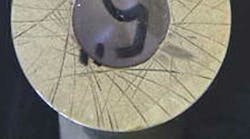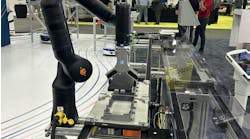From the moment they're installed and commissioned, hydraulic components start to wear out. Often slowly at first, then quickly. Here are 6 ways it happens:
Abrasive wear is the scuffing and scoring of a lubricated surface. It can be further divided into two-body abrasion and three-body abrasion. Two-body abrasion occurs when two lubricated surfaces come into direct contact with each other-usually as a result of loss of the lubricating oil film. Three-body abrasion occurs when the clearance between two lubricated surfaces is bridged by one or more hard particles. In this case it's the clearance-sized hard particles that are responsible for scoring the lubricated surface(s).
Adhesive wear is usually a progression of two-body abrasion. If the oil film between two lubricated surfaces moving relative to each other is lost, the two surfaces begin to scuff (two-body abrasion). This scuffing results in friction which creates heat. If the friction and heat is sufficient, the two surfaces can begin to adhere (friction weld) to each other. Although complete seizure is possible, adhesive wear typically results in the transfer of metal from one surface to the other, as the asperites (microscopic high points) adhere and are then torn from their parent-metal surface.
Fatigue wear can occur in heavily loaded lubricated contacts-especially bearings and gears. Point loading can cause elastic deformation of the component's surface. And the resulting stress concentration causes surface cracking and eventually, spalling (break away) of the surface material.
Erosive wear occurs when the hydraulic fluid is contaminated with large amounts of silt-sized (< 2-micron) hard particles. As the contaminated hydraulic fluid moves past lubricated surfaces at relatively high velocities, it works like an abrasive slurry, polishing (eroding) away these surfaces and eventually, increasing the clearances between them.
Cavitation wear occurs when oil-vapor bubbles (or air bubbles) form-at the pump inlet for example, and then collapse under pressure at the pump outlet. The micro-jet formed during bubble collapse is powerful enough to erode case-hardened steel. So if vapor or air bubbles collapse under pressure in proximity to any metal surface, erosion and metal loss result.
Corrosive wear occurs when chemical reaction results in loss of surface material. Rusting of ferrous metals is an obvious example. But if the hydraulic oil has been degraded by water or heat, chemical by-products such as acids can chemically attack some metals. In addition, yellow metals (bronzes) can be susceptible to chemical attack by some oil additives - especially if water is present.
Not being proactive in minimizing the effects of these 6 types of wear is a costly mistake in the long run. And to discover six other costly mistakes you want to be sure to avoid with your hydraulic equipment, get "Six Costly Mistakes Most Hydraulics Users Make... And How You Can Avoid Them!" available for FREE download here.

Continue Reading
Continue Reading
BOOK 2, CHAPTER 12: Fluid Motor Circuits
March 18, 2009
Motor leakage variations
Oct. 18, 2006
Sponsored Recommendations
Sponsored Recommendations
All-In-One DC-UPS Power Solutions
March 13, 2024
Motor Disconnect Switches
March 13, 2024
Industrial Straight-Through Cable Gland
March 13, 2024
